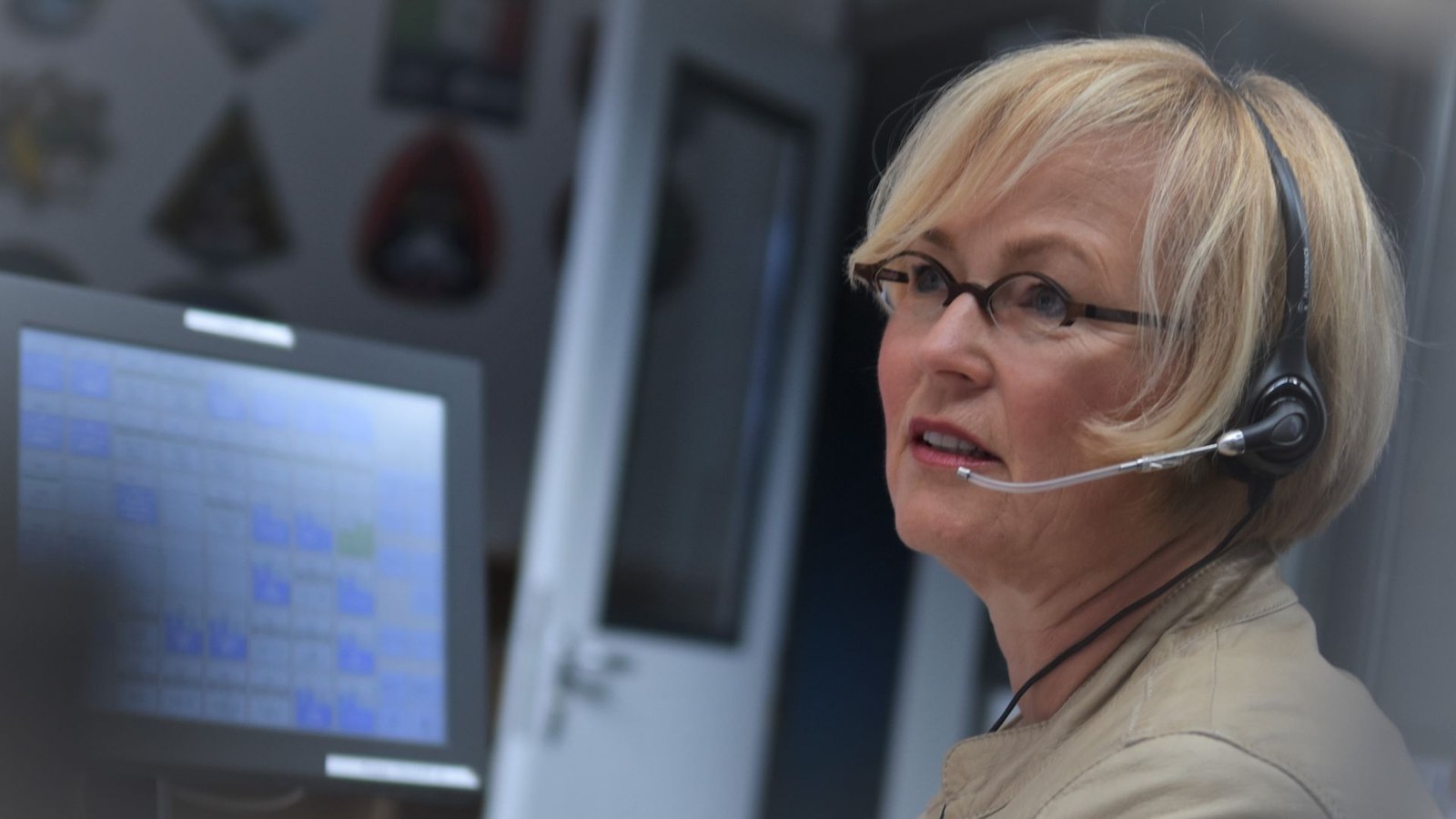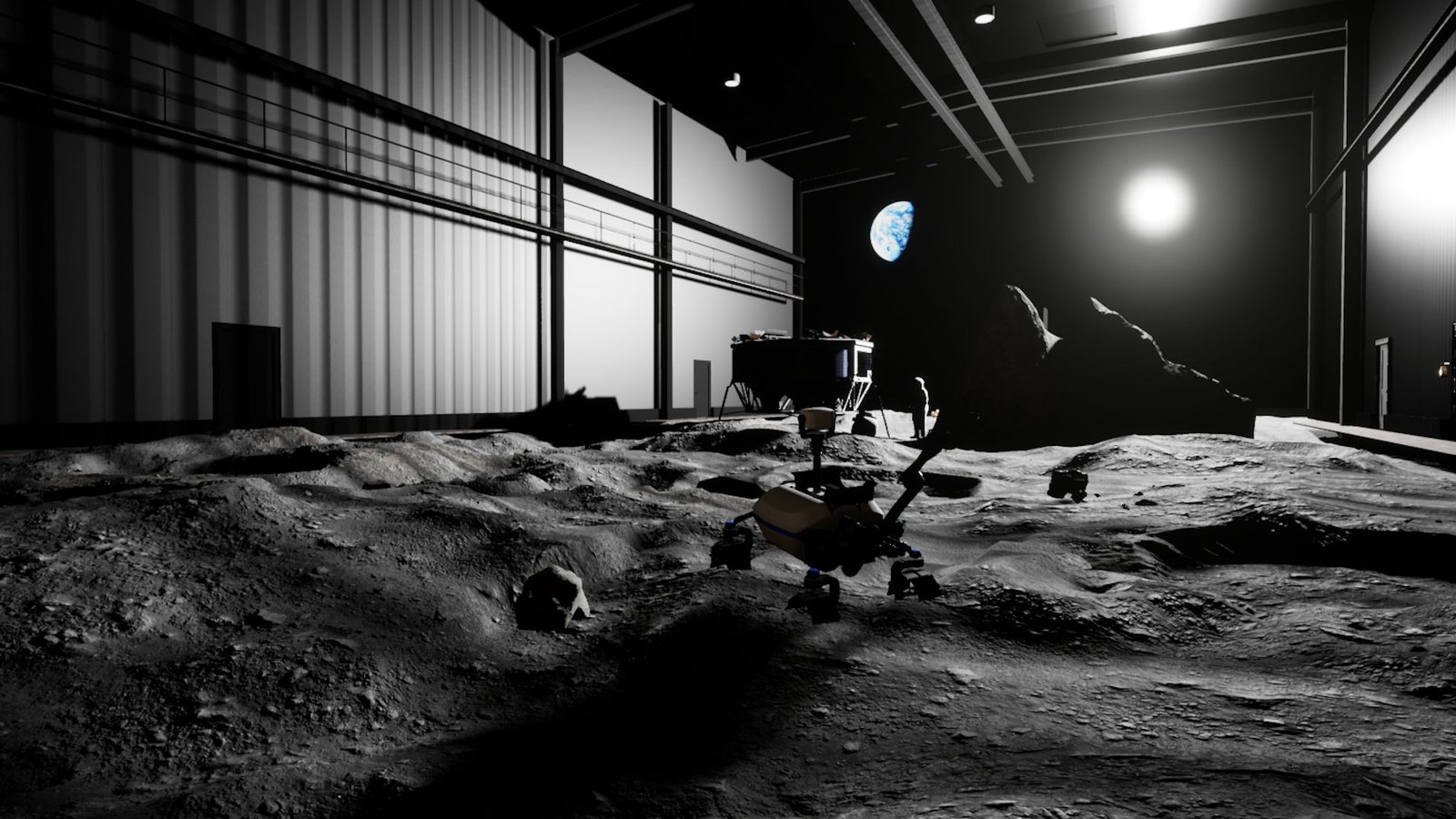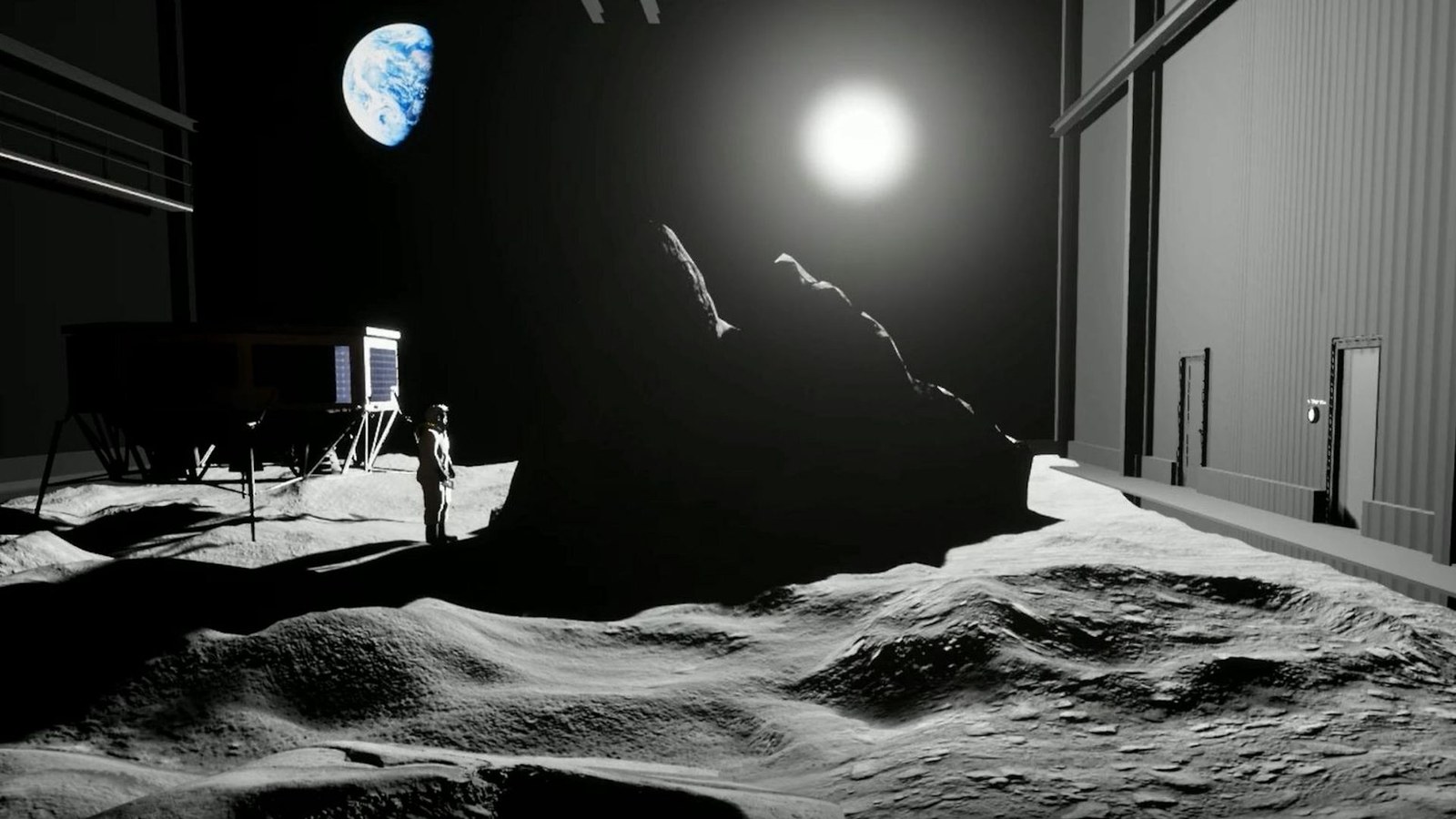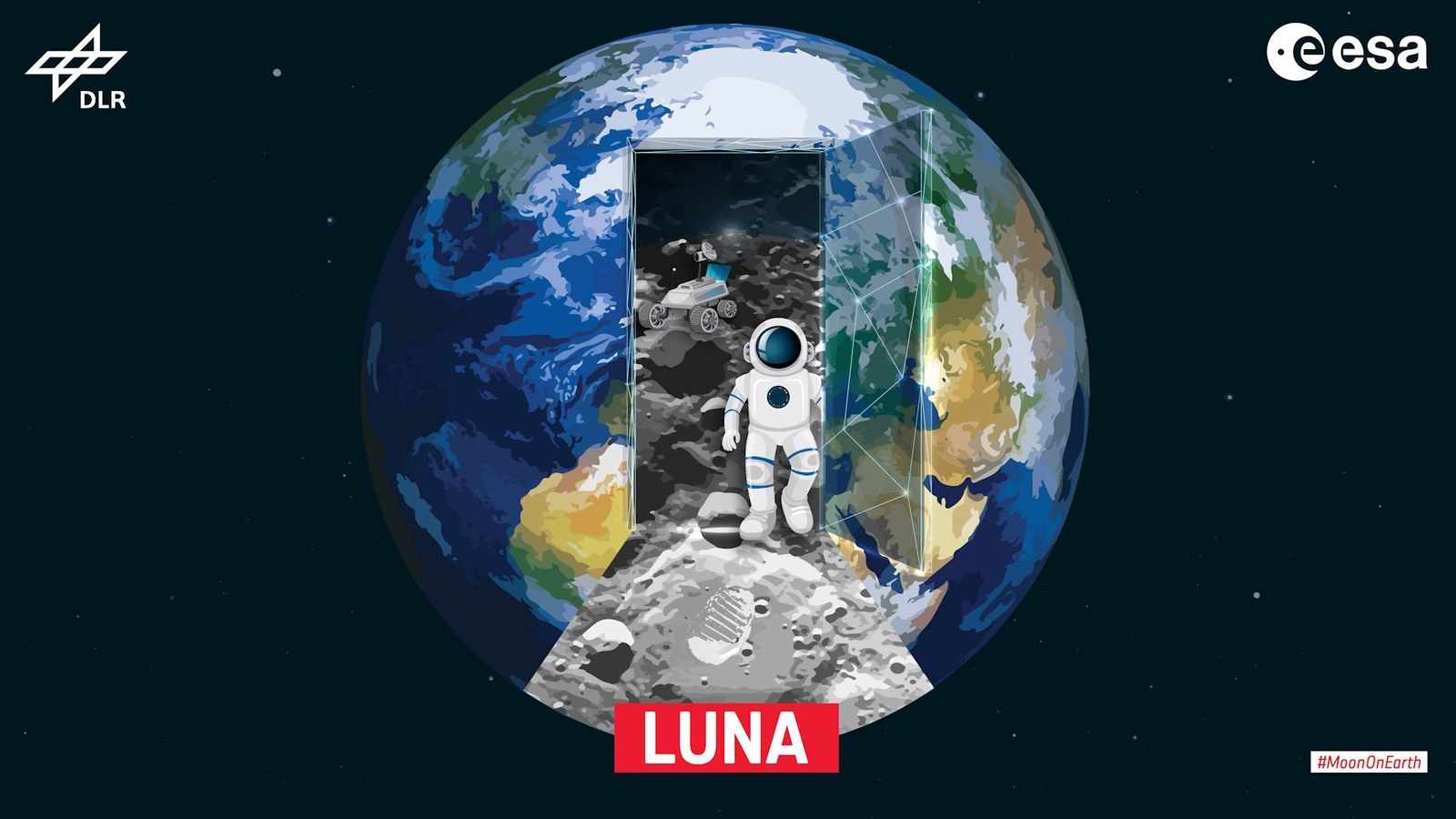The Moon’s terrestrial outpost - the LUNA facility
Seven hundred square metres and nine meters high – these are the dimensions of the hall in which the Moon will have its earthly outpost from 2024. It is a small outpost when you consider that the Moon has a surface area of almost 38,000,000 square kilometres, and yet the LUNA facility will be the only place in Europe where researchers, astronauts and rovers can ‘travel’ to Earth's satellite in the future and conduct comprehensive mission training. The Moon itself will be the model. This extraterrestrial world of fine dust and coarse rocks is special: sharp stones that wind and weather don't wear down, fine dust particles, gravity just one sixth as strong as that of Earth, almost no atmosphere and light conditions that vary between pitch black and broad daylight.
The Moon on Earth
Many of these harsh conditions will also be experienced inside the LUNA hall which is jointly built by DLR and ESA. When astronauts and researchers enter the hall, they will stand with their feet in lunar-like regolith sand – delivered fresh from Germany’s Eifel region. Powerful spotlights will simulate the unbroken rays of the Sun, while deep black walls will ensure that there are no reflections, just as on the Moon. The entire scenery in the high hall is immersed in light and shadow, as was seen in the photos from the Apollo missions. A gravity off-loading system ensures that the astronaut crew and rover experience the reduced gravity of the Moon and only feel a sixth of their actual weight. Landers and rovers stand and drive between rocks and hills, as they did at the Apollo landing sites on the Moon.
Develop, test, optimise

What is the goal of this Moon outpost in Cologne-Porz? "We would like national and international astronauts and science teams to train with us for their Moon missions and test new technologies that are to be used on the Moon," says Petra Mittler. She is a physicist that works both in business development for DLR space research and in the international support team for European astronauts. These two activities led to the idea of launching the LUNA system as a collaborative activity. Technologies that are necessary for human missions, mission processes, the cooperation between human and machine as well as communication between teams in the control rooms on Earth and a crew on the Moon – all this can be developed, tested and optimised in the LUNA facility.
To bring researchers as close as possible to the Moon, the LUNA hall will also have a ‘deep floor’ area that will make it possible to drill up to a depth of three metres. An inclined plane willlow for testing of a rover's off-road capabilities, for example. A flexible habitat will be attached to simulate entering and exiting the lunar surface. In other rooms, DLR and ESA will house a gas laboratory in which, for example, the extraction and further processing of gases from lunar dust can be investigated. In a dust chamber, ways to protect against the ubiquitous Moon dust can be researched, among other things. Contact between the ground team and the team in the training hall will be possible from on-site, multifunctional console rooms, but the LUNA hall is also connected to the control rooms at DLR’s Microgravity User Support Center (MUSC) in Cologne and German Space Operations Center (GSOC) in Oberpfaffenhofen, in the same way that they are connected to the International Space Station ISS in orbit. An independent regenerative energy system will keep external elements of LUNA running. With the DLR greenhouse EDEN ISS – already successfully operated in the Antarctic – plant cultivation in a closed material cycle is to be further tested and geared towards Moon missions.
Cooperation between science and industry
With this facility, DLR and ESA are bringing together many existing competencies and networks: researchers from seven DLR institutes and facilities from all over Germany and the astronaut and training teams from ESA’s European Astronaut Centre will all contribute their knowledge and research topics. In addition to DLR Space Operations, the DLR Institute of Aerospace Medicine, the DLR Institute of Robotics and Mechatronics, the DLR Institute of Space Systems and the DLR Institute of Materials Physics in Space, the DLR Institutes for Materials Research and for Future Fuels are also part of the LUNA team. Other national and international research institutions, space agencies, start-ups and industrial partners will also be given the opportunity to carry out experiments.
In the coming year, the industrial hall will be built on the DLR site and equipped for use. From 2024, the first projects could then take place on this earthly Moon. "We can imagine topics ranging from environmental technologies to smart energy systems, artificial habitats, new building materials, new construction processes, health applications and telemedicine," says Petra Mittler. One thing is clear: developments that are useful for the flight to the Moon and its exploration and use often also find applications for life here on Earth – and vice versa.



